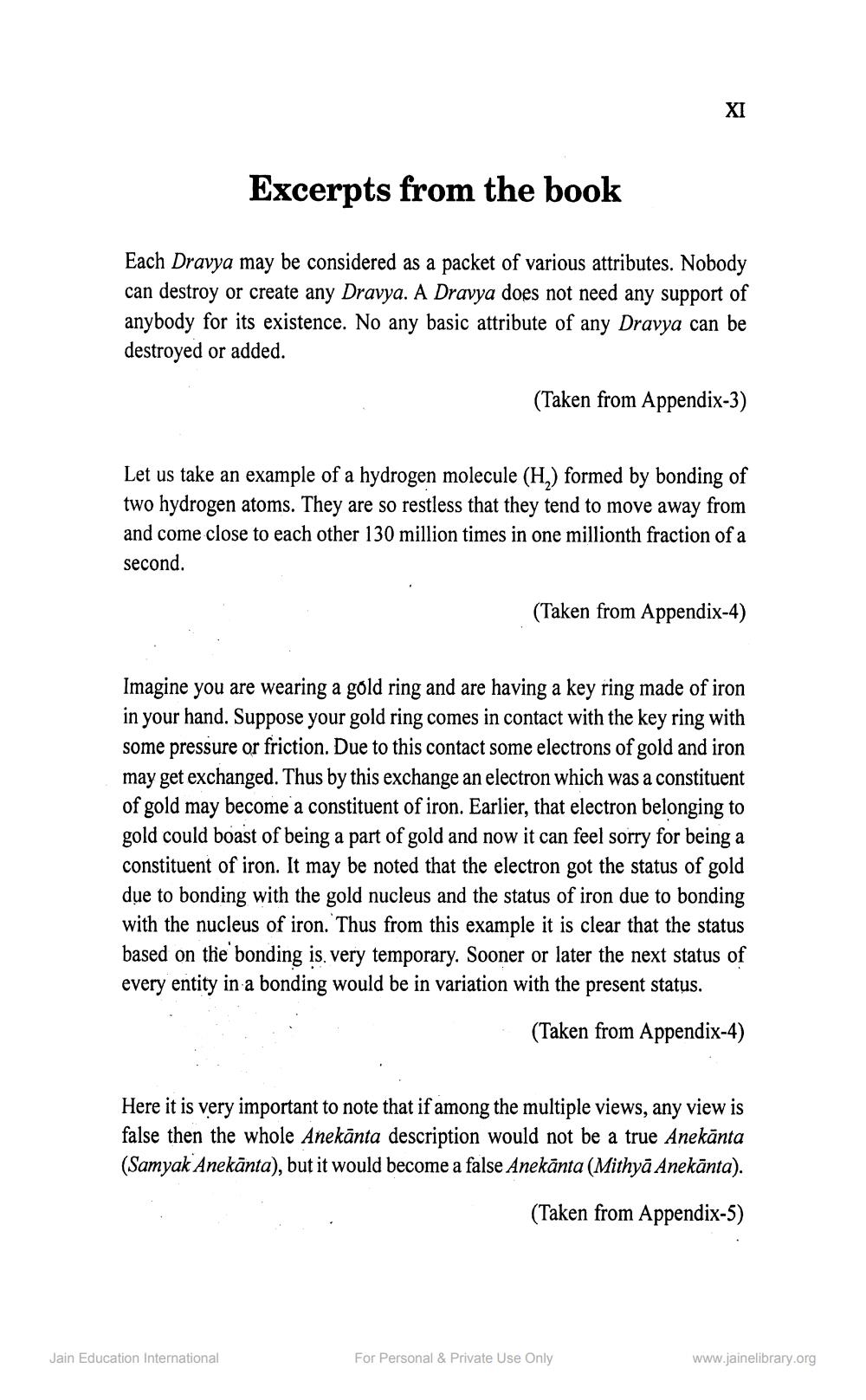________________
Excerpts from the book
Each Dravya may be considered as a packet of various attributes. Nobody can destroy or create any Dravya. A Dravya does not need any support of anybody for its existence. No any basic attribute of any Dravya can be destroyed or added.
(Taken from Appendix-3)
Let us take an example of a hydrogen molecule (H,) formed by bonding of two hydrogen atoms. They are so restless that they tend to move away from and come close to each other 130 million times in one millionth fraction of a second.
(Taken from Appendix-4)
Imagine you are wearing a gold ring and are having a key ring made of iron in your hand. Suppose your gold ring comes in contact with the key ring with some pressure or friction. Due to this contact some electrons of gold and iron may get exchanged. Thus by this exchange an electron which was a constituent of gold may become a constituent of iron. Earlier, that electron belonging to gold could boast of being a part of gold and now it can feel sorry for being a constituent of iron. It may be noted that the electron got the status of gold due to bonding with the gold nucleus and the status of iron due to bonding with the nucleus of iron. Thus from this example it is clear that the status based on the bonding is very temporary. Sooner or later the next status of every entity in a bonding would be in variation with the present status.
(Taken from Appendix-4)
Here it is very important to note that if among the multiple views, any view is false then the whole Anekānta description would not be a true Anekānta (Samyak Anekānta), but it would become a false Anekānta (Mithyā Anekānta).
(Taken from Appendix-5)
Jain Education International
For Personal & Private Use Only
www.jainelibrary.org




